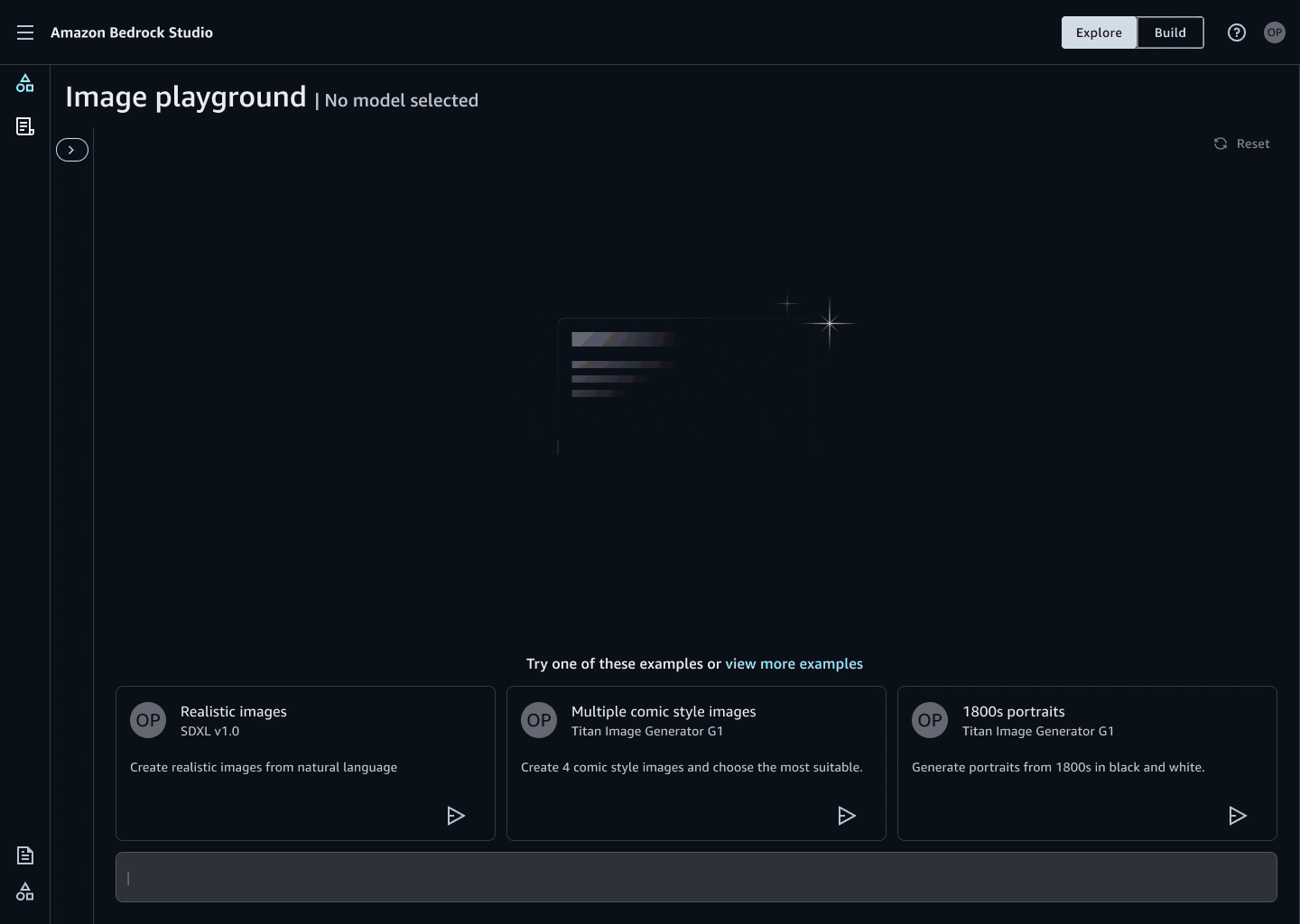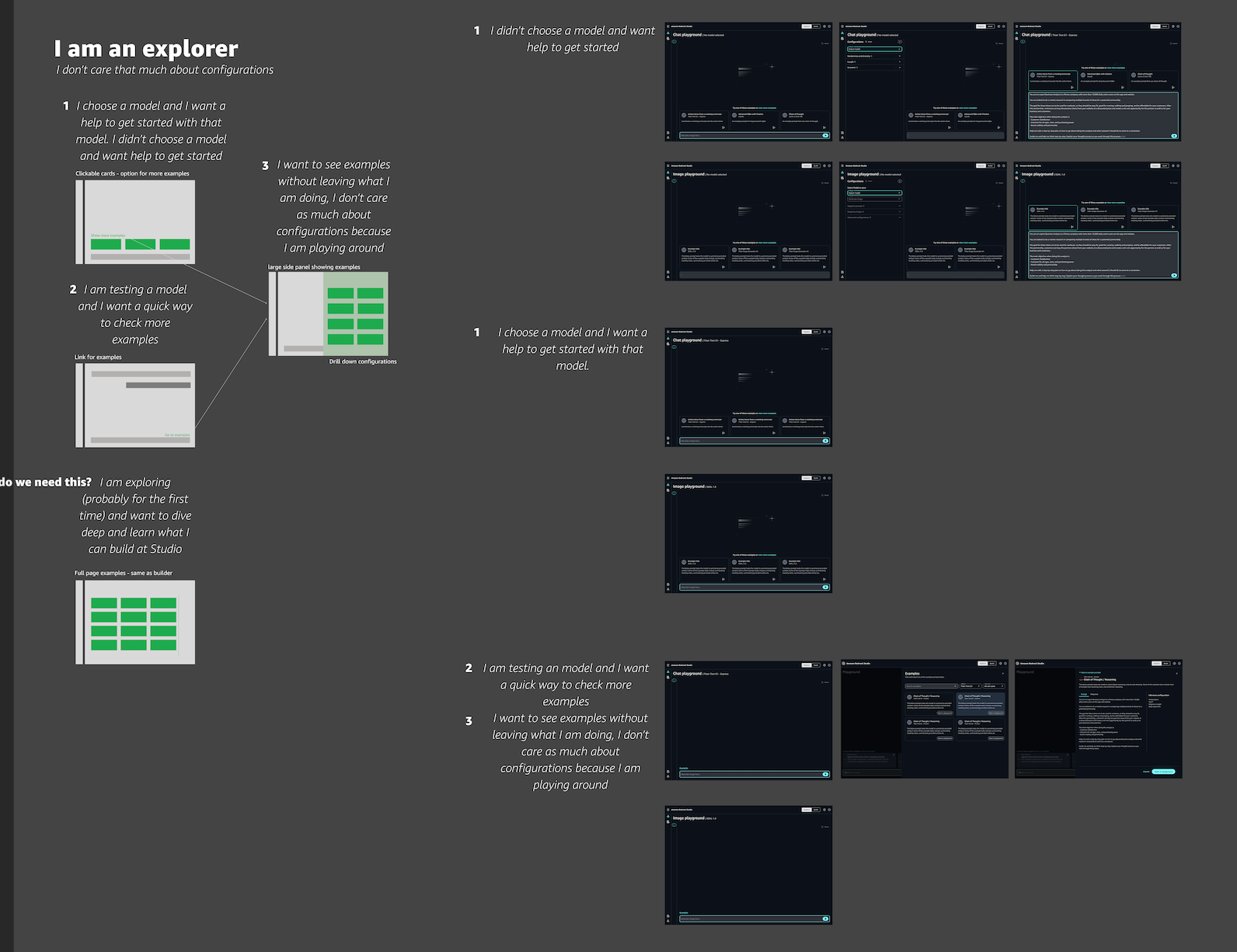Bedrock Studio
A workspace that empowers users to experiment, evaluate, and deploy AI apps without deep ML expertise.
Problems I focused on
No way to track or compare iterations of AI experiments
Complex interface barriers when trying to generate AI images
Difficulty getting started without clear examples or templates
Aggressive timeline: from 0 to shipping in 3 months
My role
Led UX design for version control, creating a scalable pattern now adopted across the product
Designed the image generation playground, balancing powerful features with user simplicity
Developed example templates to accelerate user onboarding (later descoped due to time constraints)
Impact
Successfully launched Bedrock Studio within tight deadlines
Democratized AI development by enabling developers of all skill levels to build secure, compliant applications rapidly while adhering to responsible AI practices. Significantly reduced development time without compromising enterprise standards.
Bedrock Studio is a key component of what became SageMaker Unified studio
Context
Persona
Experimental app developer (Bedrock studio persona)
Production app developer (AWS persona)
Technical constraints
Bedrock Studio was tightly anchored to the Bedrock console, allowing us to deliver quickly.
Designs in many ways had a parallelism with Bedrock console patterns.
Versions
Versions for builders
Customers need a way to restore or edit to previous configurations during their building process. Versions allow them to do this.
Challenges
While developing versions, prompt builder functionality was unexpectedly introduced, requiring rapid adaptation of our design system. The key challenge was creating a flexible pattern that would seamlessly work across different builder types while maintaining consistency and user experience quality. This demanded quick iteration and collaboration to ensure our patterns could scale across the entire product suite without disrupting ongoing development.
Result
Introduced a new UX pattern, later adopted across the product.
Image playground
Generate images in explore mode
Enable enterprise users to experiment with AI image models, transforming complex image generation capabilities into an accessible workspace for business use.
Challenges
Multi-modal support
Designed for diverse AI models, each with unique configurations and pre-built capabilities, requiring a flexible interface that could adapt to varying model requirements.
Evolving platform
Developed solutions while Bedrock console was actively expanding, demanding continuous pattern adaptation and close collaboration with parallel feature developments.
Result
Shipped image playground for explorers
Presented product rationale for building a playground mode for app developers—enabling use cases like character creation, scenario modeling, and more.
Examples
Help users get started
Enterprise users needed a faster way to start experimenting with AI models. Many struggled to write effective prompts or understand model capabilities, leading to a steep learning curve and slower adoption.
Challenges
No engineering headcount—feature was descoped before launch.
Result
Designed an examples library that would:
Showcase best practices for different use cases
Provide ready-to-use prompt templates
Demonstrate optimal model configurations
Enable quick experimentation through pre-built scenarios




